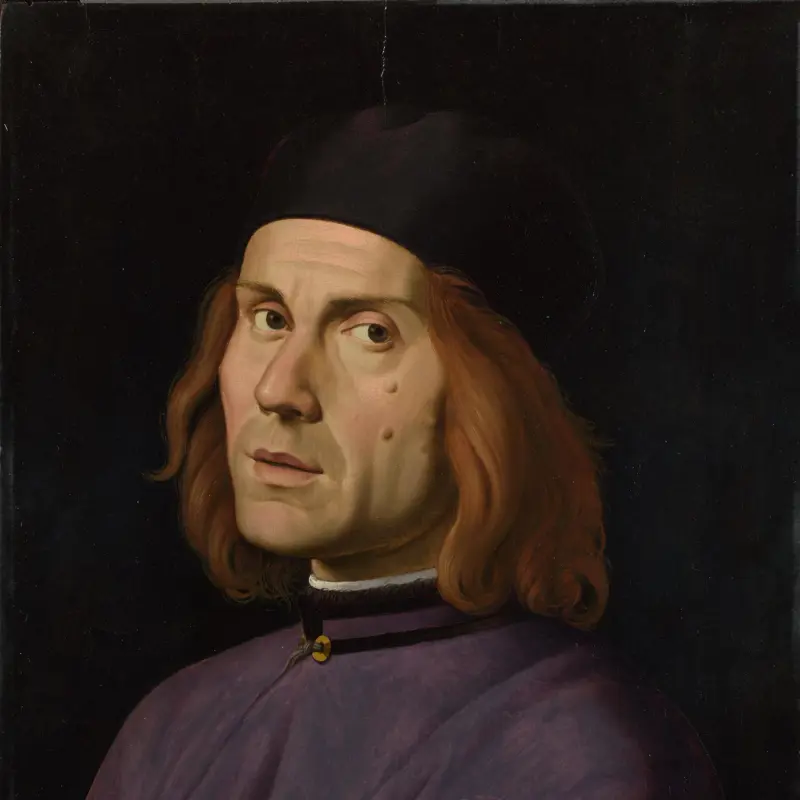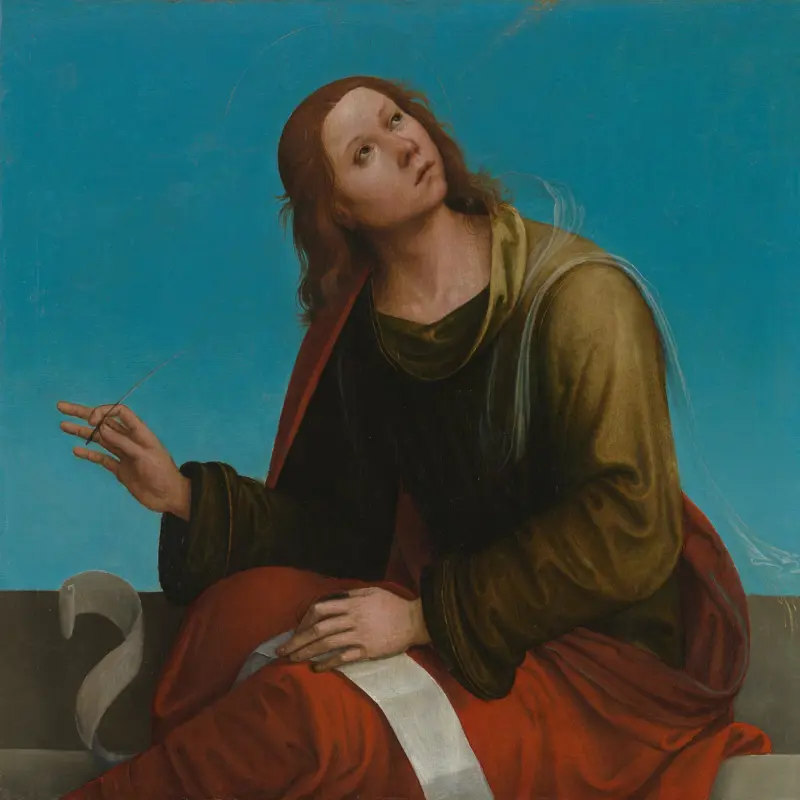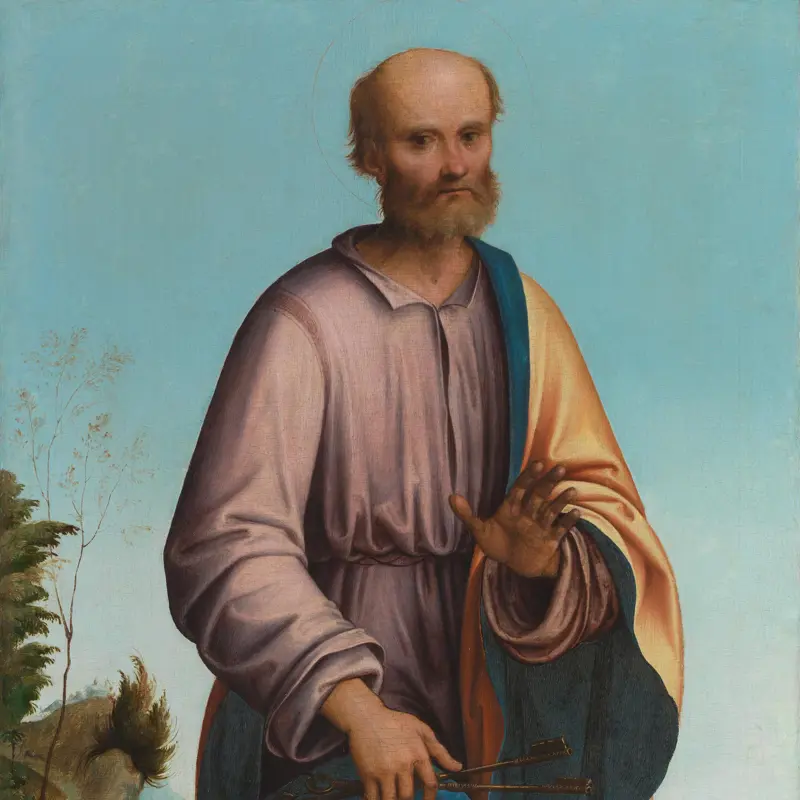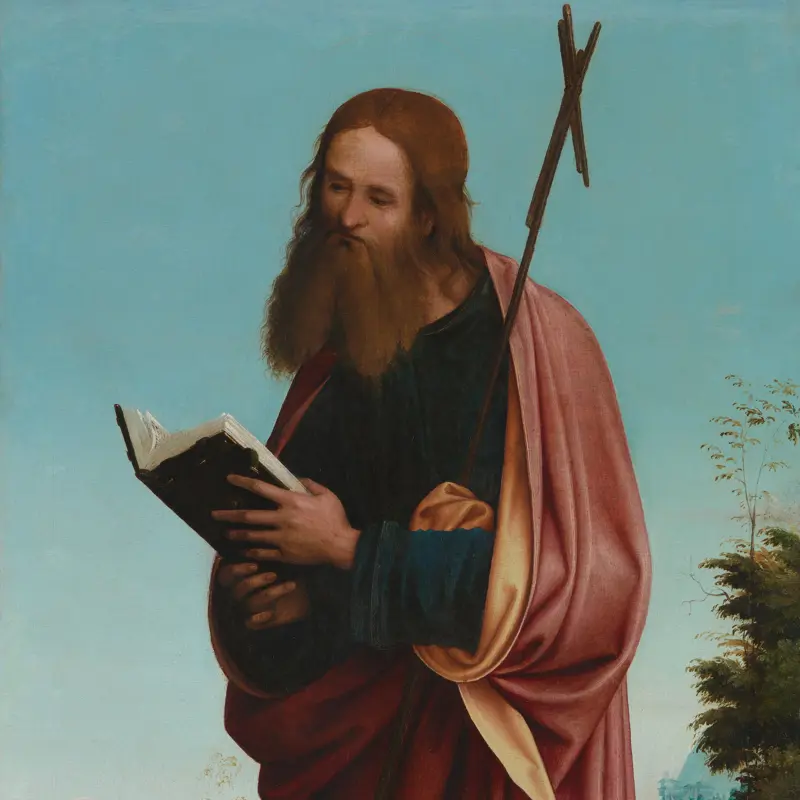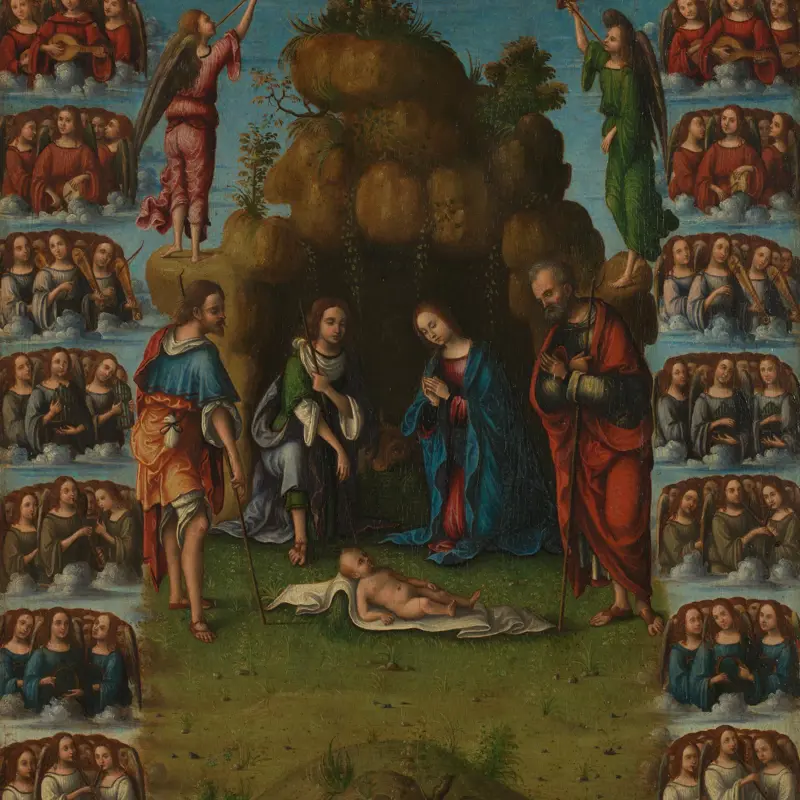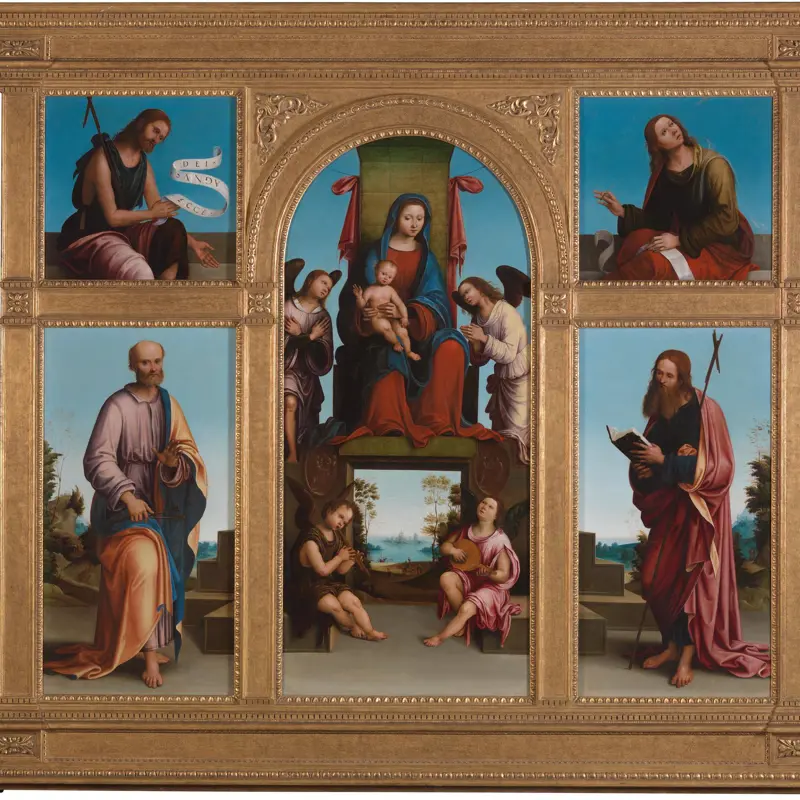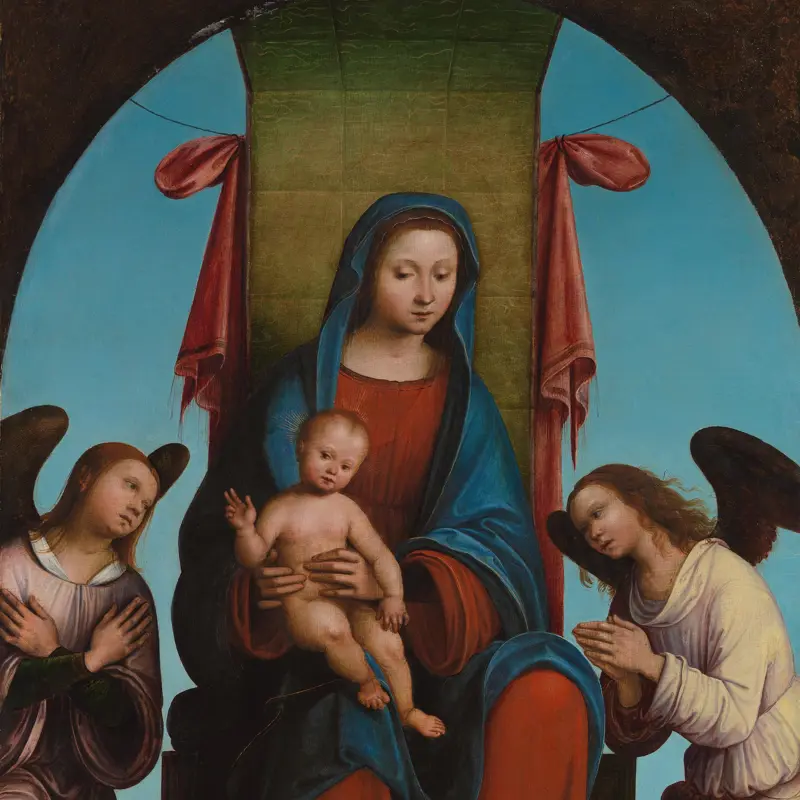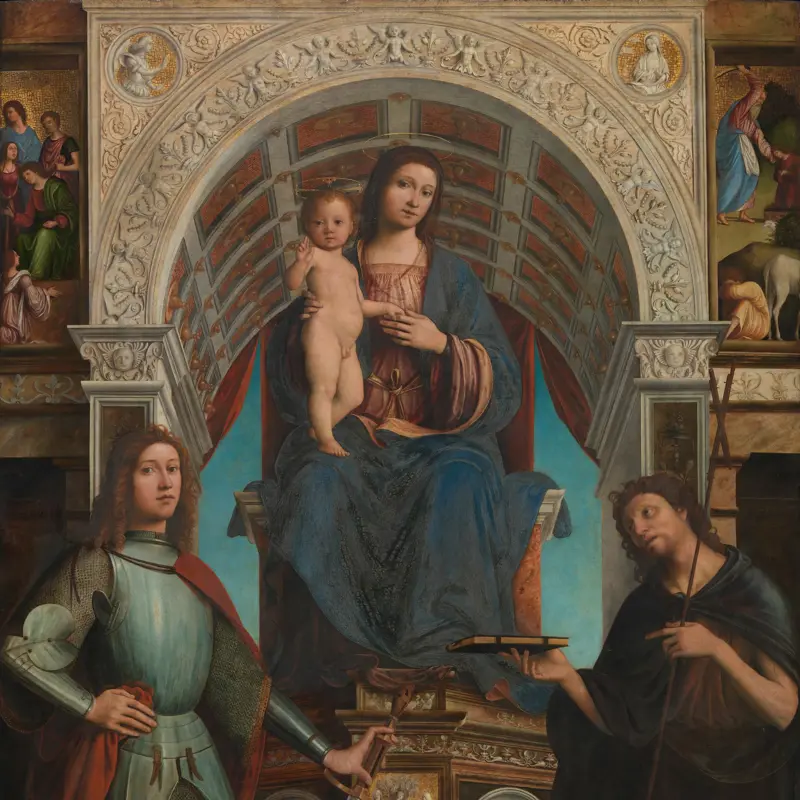Lorenzo Costa, 'A Concert', about 1488-90
About the work
Overview
With this painting, Costa invented a type of image that would become very popular in northern Italy, particularly Venice, in the sixteenth century. The band of singers is engrossed in the camaraderie of their music; as she sings, the young woman keeps time by tapping her fingers against the marble ledge and her companion’s shoulder. He is deep in concentration, his eyes lowered towards the open book containing the musical composition. The young man behind him appears to be straining to reach or hold a note and he too is tapping time on the ledge.
The picture does not depict a particular moment or people. It is more likely that it was made to entertain an educated and wealthy patron who, like his contemporaries, embraced the fashion for cantare a libro (’singing from a book'), a developing trend in northern Italy.
Key facts
Details
- Full title
- A Concert
- Artist
- Lorenzo Costa
- Artist dates
- 1460 - 1535
- Date made
- about 1488-90
- Medium and support
- oil on wood
- Dimensions
- 95.3 × 75.6 cm
- Acquisition credit
- Salting Bequest, 1910
- Inventory number
- NG2486
- Location
- Room 14
- Collection
- Main Collection
- Previous owners
- Frame
- 16th-century Italian Frame
Provenance
Additional information
Text extracted from the ‘Provenance’ section of the catalogue entry in Giorgia Mancini and Nicholas Penny, ‘National Gallery Catalogues: The Sixteenth Century Italian Paintings’, vol. 3, ‘Bologna and Ferrara’, London 2016; for further information, see the full catalogue entry.
Bibliography
-
1780J.A. Calvi, Versi e prose sopra una serie di eccellenti pitture posseduta dal signor marchese Filippo Hercolani, Bologna 1780
-
1782C.C. Malvasia, Pitture, scolture ed architetture delle chiese, luoghi pubblici, palazzi, e case della città di Bologna, Bologna 1782
-
1844G. Baruffaldi, Vite de' pittori e scultori Ferraresi, ed. G. Boschini, Ferrara 1844
-
1884F. Harck, 'Die Fresken im Palazzo Schifanoja in Ferrara', Jahrbuch der Königlich Preussischen Kunstsammlungen, V, 1884, pp. 99-127
-
1889A. Venturi, 'Ercole de' Roberti', Archivio storico dell'arte, 1889
-
1892G. Morelli, Italian Painters: Critical Studies of Their Works, 2 vols, London 1892
-
1894F. Harck, 'Ausstellungen und Versteigerungen: Burlington Fine Arts Club, London', Repertorium für Kunstwissenschaft, XVII, 1894, pp. 312-9
-
1894J.P. Richter, 'Old Ferrarese and Bolognese Pictures', Art Journal, X, 1894, p. 255
-
1907B. Berenson, North Italian Painters of the Renaissance, New York 1907
-
1908A. Venturi, 'Le opere de' pittore ferraresi del '400 secondo il catalogo di Bernardo Berenson', L'arte, 1908, pp. 419-32
-
1910C. Phillips, 'The Salting Collection, II: The Italian Pictures', The Burlington Magazine, XVII/85, 1910, pp. 9-22
-
1911E.G. Gardner, The Painters of the School of Ferrara, London 1911
-
1915H.F. Cook, 'Further Light on Baldassare d'Este', The Burlington Magazine, XXVII/147, 1915, pp. 98-104
-
1933C. Gamba, 'Ercole de Ferrara', in C. Gamba, L'esposizione della pittura ferrarese del Rinascimento, Ferrara 1933
-
1941S. Ortolani, Cosmè Tura, Francesco del Cossa, Ercole de' Roberti, Milan 1941
-
1950B. Nicolson, The Painters of Ferrara: Cosmè Tura, Francesco Del Cossa, Ercole de' Roberti and Others, London 1950
-
1960M. Salmi, Ercole de' Roberti, Milan 1960
-
1961P. Egan, '"Concert" Scenes in Musical Paintings of the Italian Renaissance', Journal of the American Musicological Society, XIV/2, 1961, pp. 184-95
-
1962Gould, Cecil, National Gallery Catalogues: The Sixteenth Century Italian Schools (excluding the Venetian), London 1962
-
1967R. Varese, Lorenzo Costa, Milan 1967
-
1968R. Longhi, Ampliamento nell'Officina ferrarese, Rome 1968
-
1975C. Gould, Delaroche and Gautier: Gautier's Views on the 'Execution of Lady Jane Grey' and on other Compositions by Delaroche, London 1975
-
1977C.M. Brown, Lorenzo Costa, Ann Arbor 1977
-
1977P. Tosetti, 'Lorenzo Costa', University of Padua: Annals of the Faculty of Arts and Philiosophy, II, 1977
-
1978V.I. Stoichita, 'Deux œuvres ferraraises au Musée d'Art de la République Socialiste de Roumanie I: Qualche fabule antiqua et de bello significato', Revue roumaine d'histoire de l'art, XV, 1978, pp. 19-52
-
1981National Gallery, 'Pictures Cleaned and Restored in the Conservation Department of the National Gallery, January 1981 - December 1981', National Gallery Technical Bulletin, VI, 1982
-
1987Gould, Cecil, National Gallery Catalogues: The Sixteenth Century Italian Schools, London 1987
-
1990K. Christiansen, A Caravaggio Rediscovered: The Lute Player (exh. cat. Metropolitan Museum of Art, 9 February 1990 - 22 April 1990), New York 1990
-
1991J. Dunkerton et al., Giotto to Dürer: Early Renaissance Painting in the National Gallery, New Haven 1991
-
1992J. Manca, The Art of Ercole de'roberti, Cambridge 1992
-
1993C. Volpe, La pittura nell'Emilia e nella Romagna, Modena 1993
-
1995A. Ballarin, Dosso Dossi: La pittura a Ferrara negli anni del Ducato di Alfonso I, Padua 1995
-
2001
C. Baker and T. Henry, The National Gallery: Complete Illustrated Catalogue, London 2001
-
2016Mancini, Giorgia, and Nicholas Penny, National Gallery Catalogues: The Sixteenth Century Italian Paintings, 3, Bologna and Ferrara, London 2016
Frame
This is a sixteenth-century Italian frame from the Emilia region. Crafted from poplar wood, it features a reverse profile and retains its original gilded surface. The back edge is decorated with imbricated laurel leaves. The wide frieze is adorned with a punch-tooled design of undulating vine leaves flowing towards the corner leaves, set against a punched background. The carved sight moulding displays a twisted-ribbon motif.
This frame was acquired and fitted to Costa’s A Concert in 2012.
About this record
If you know more about this work or have spotted an error, please contact us. Please note that exhibition histories are listed from 2009 onwards. Bibliographies may not be complete; more comprehensive information is available in the National Gallery Library.

